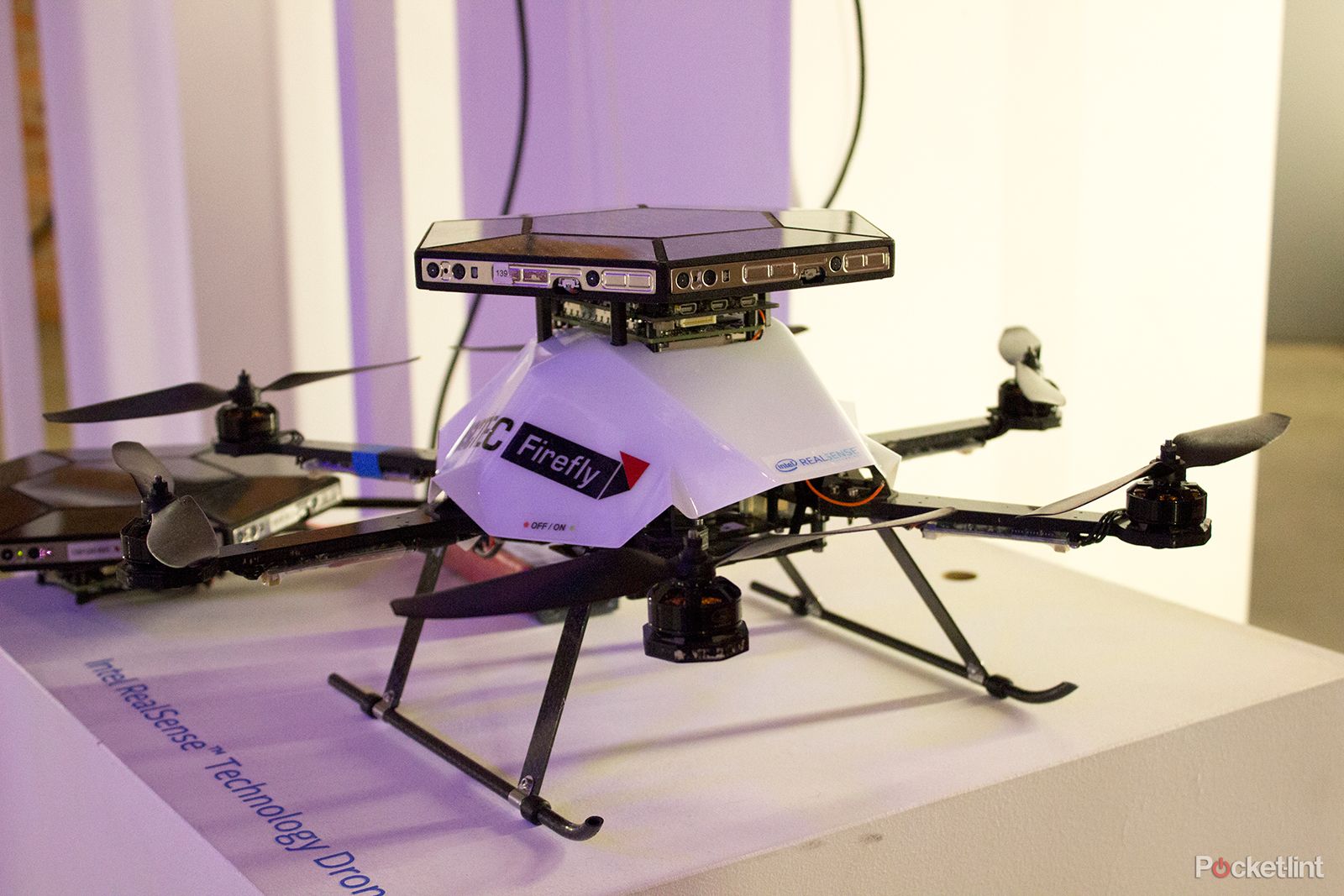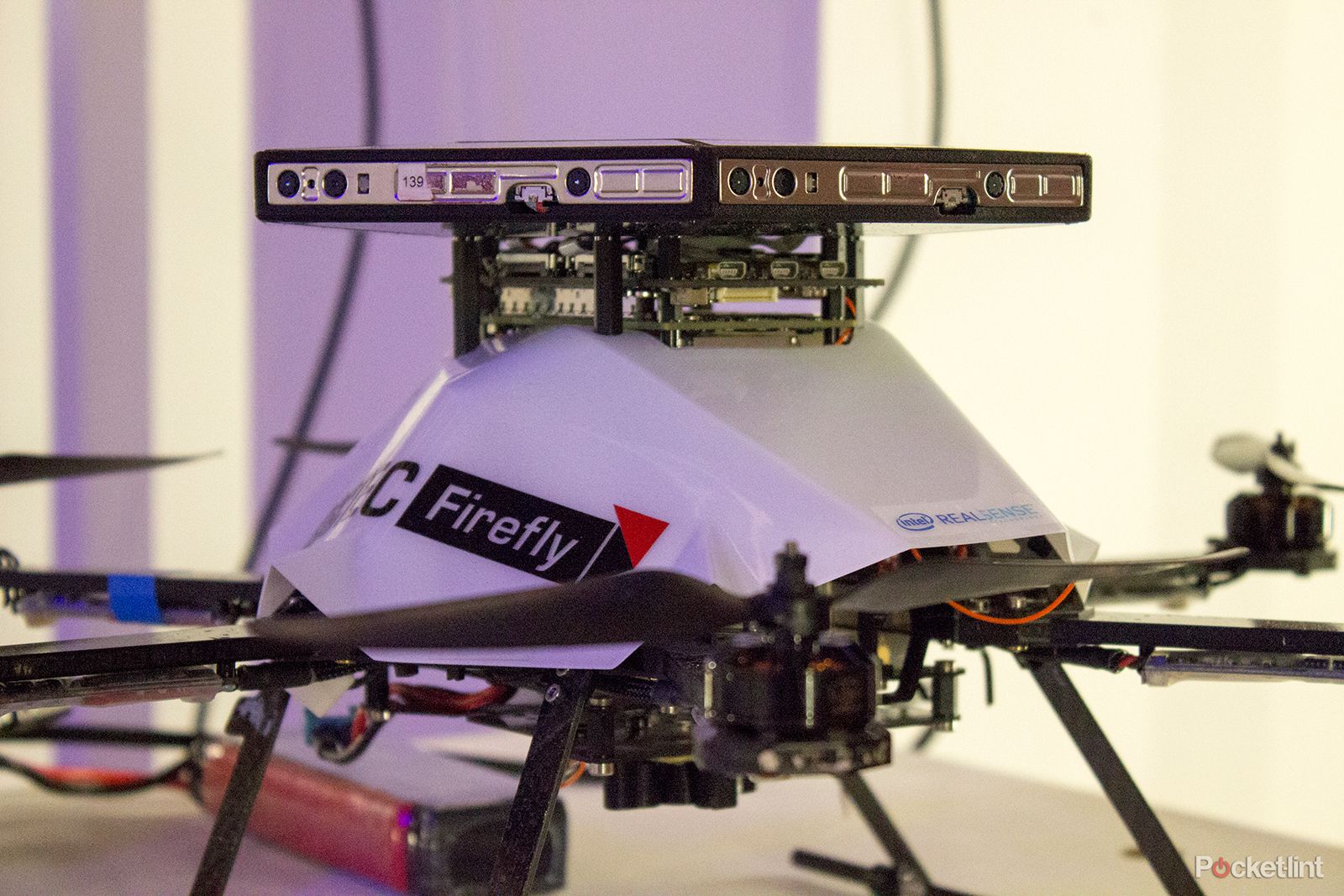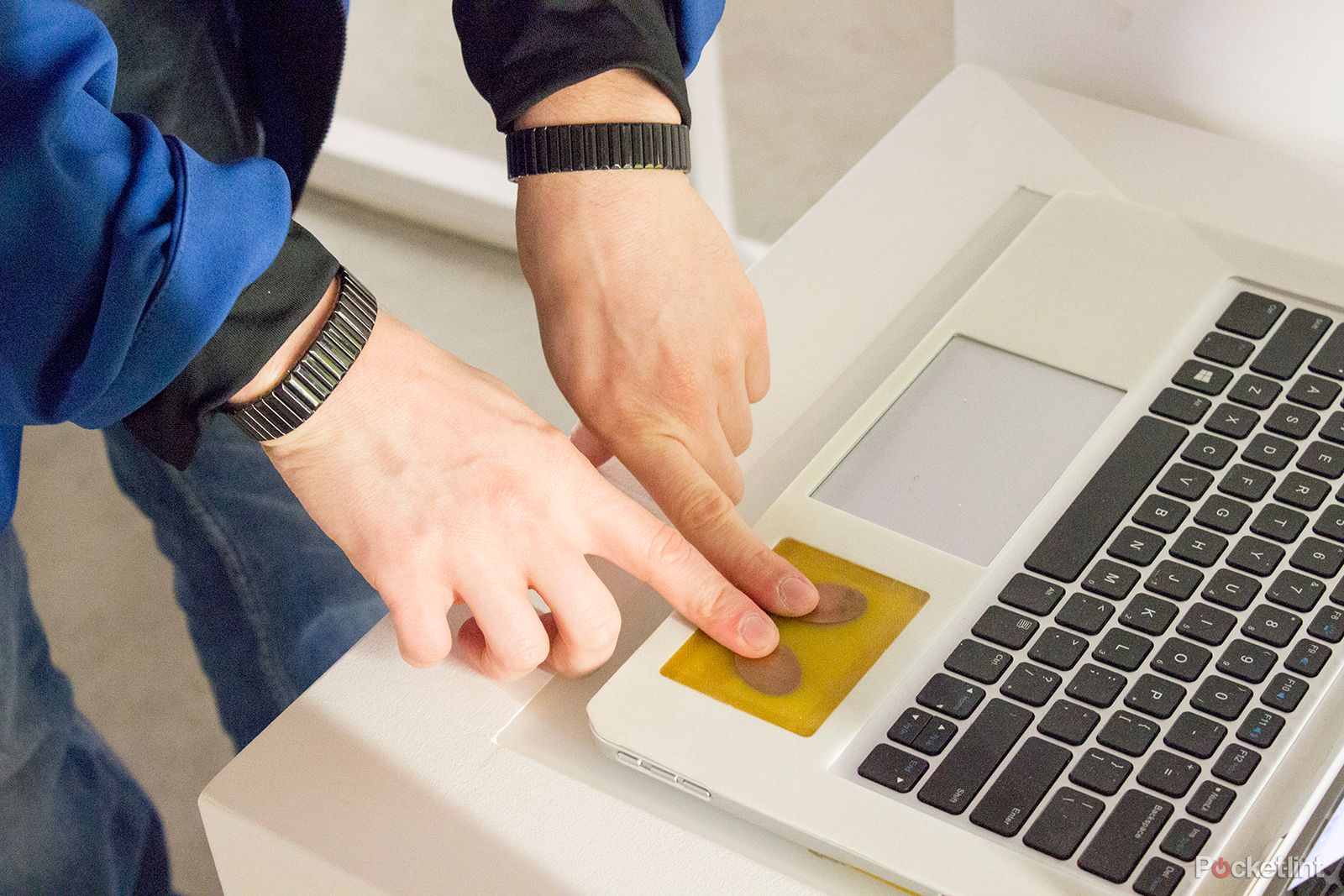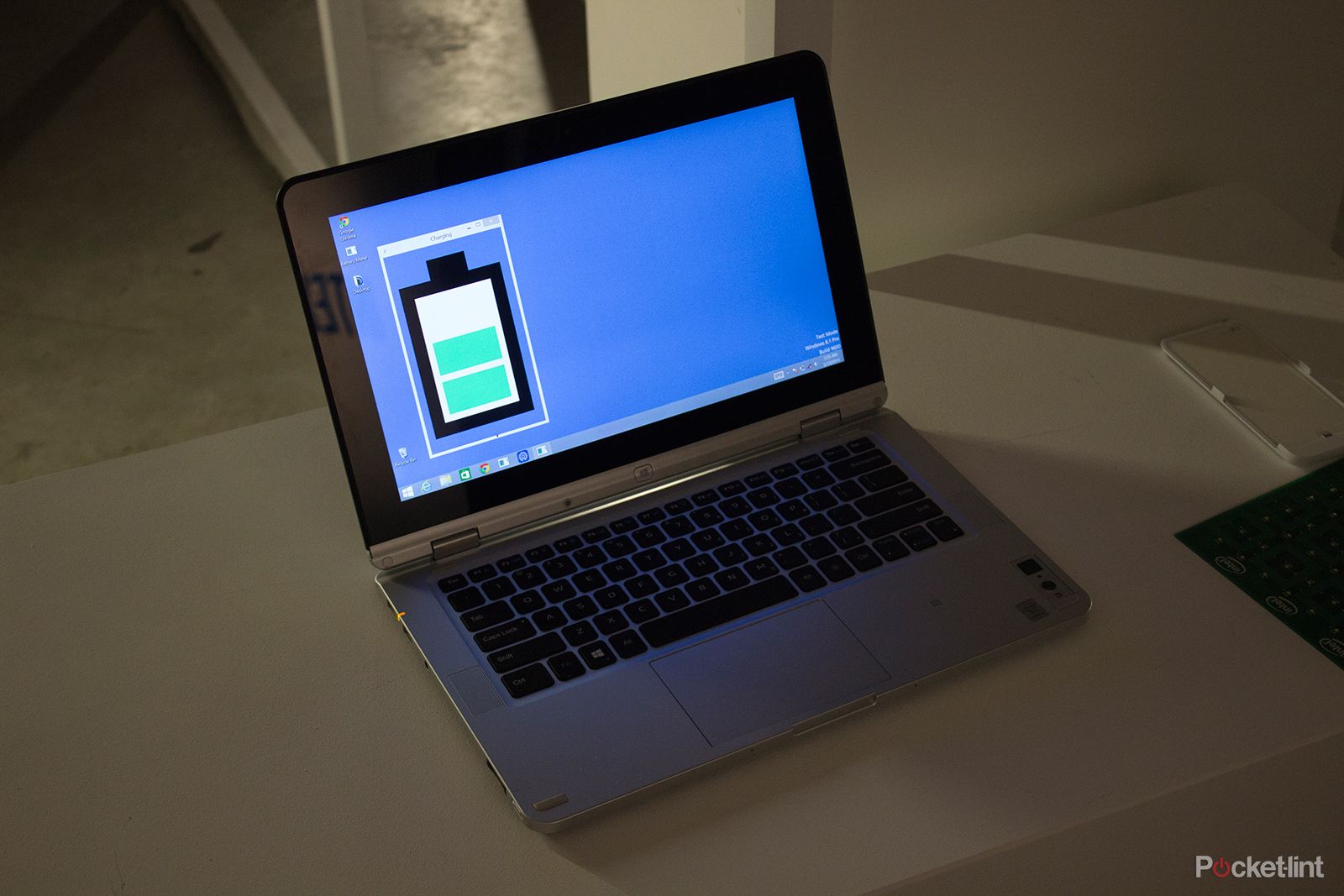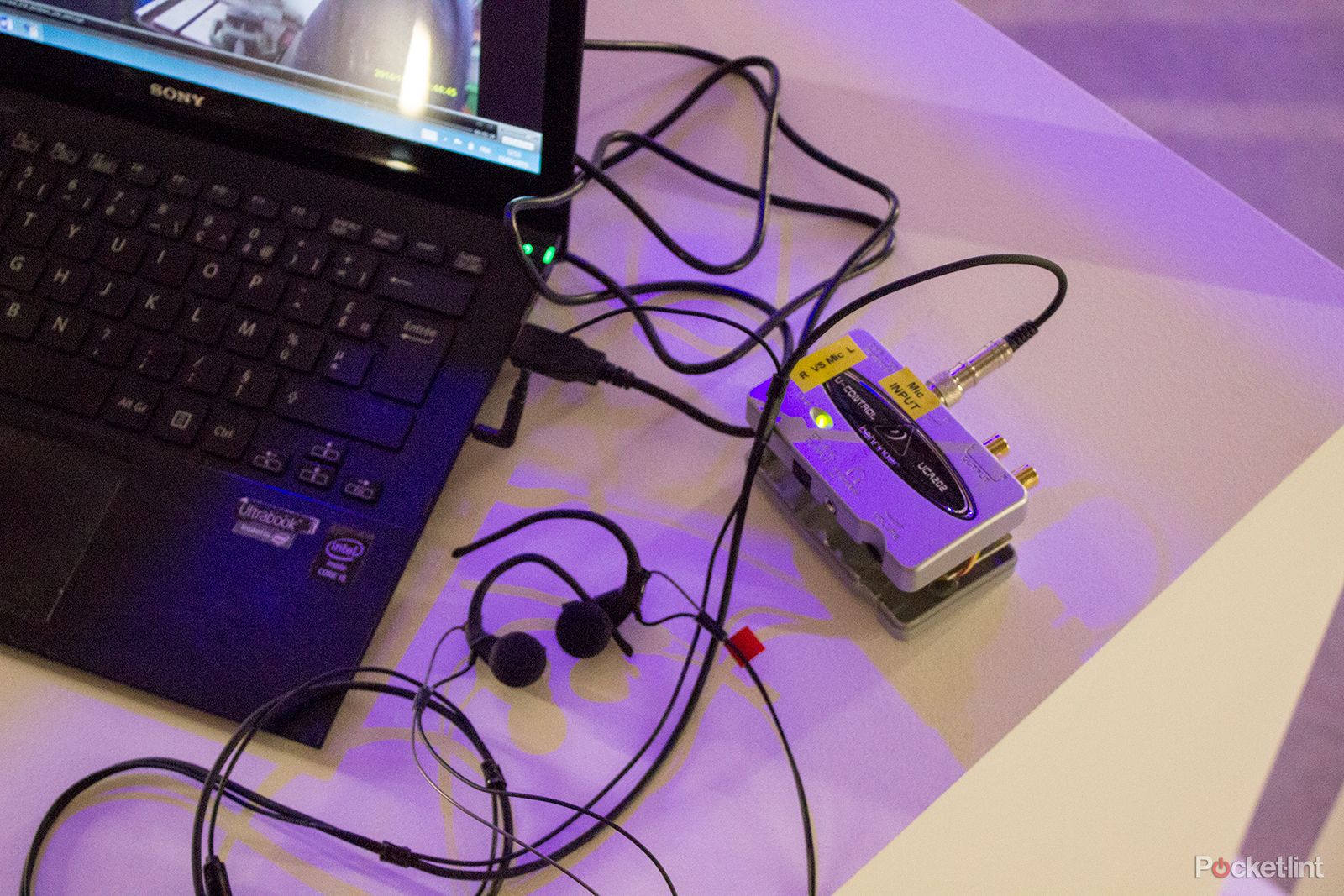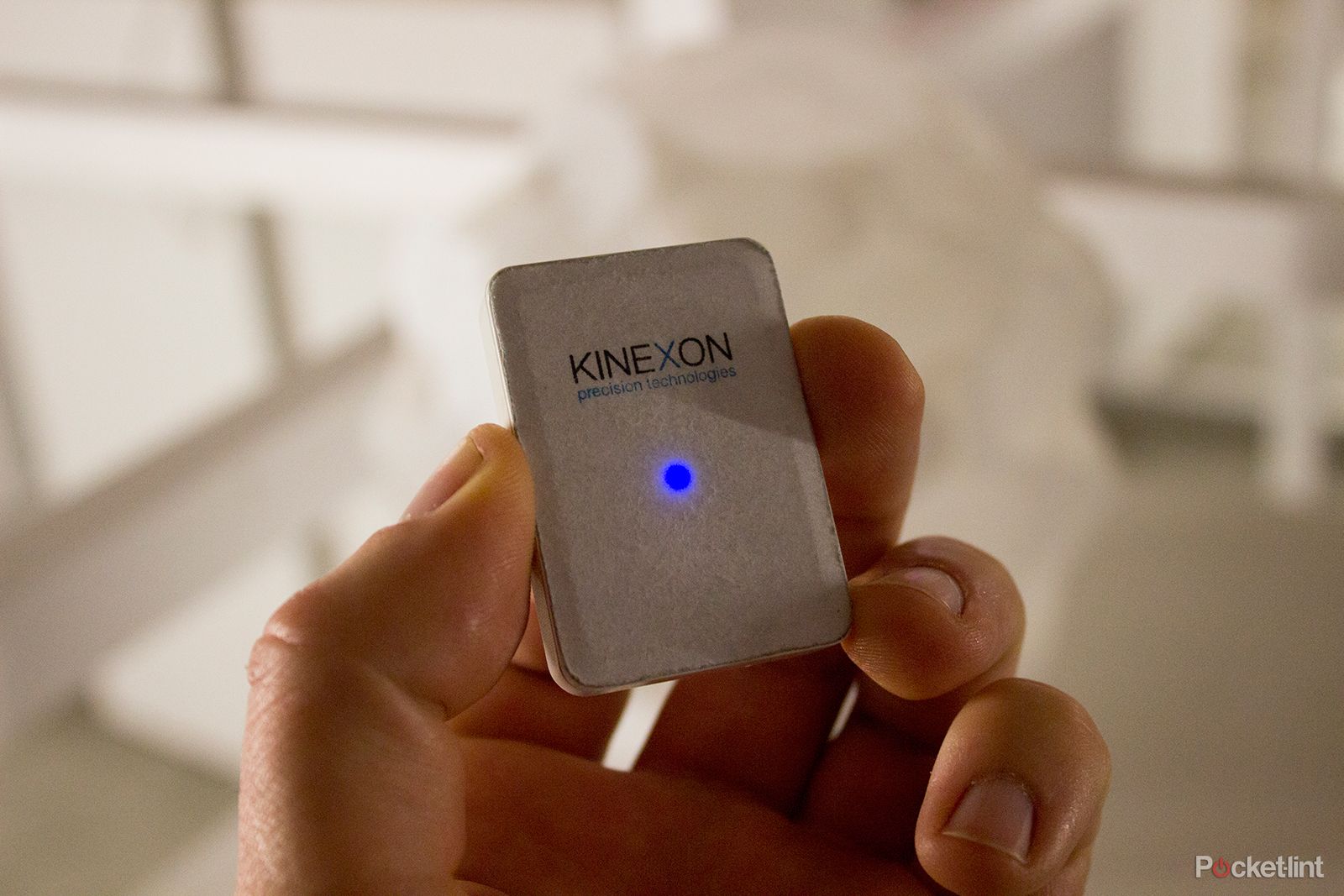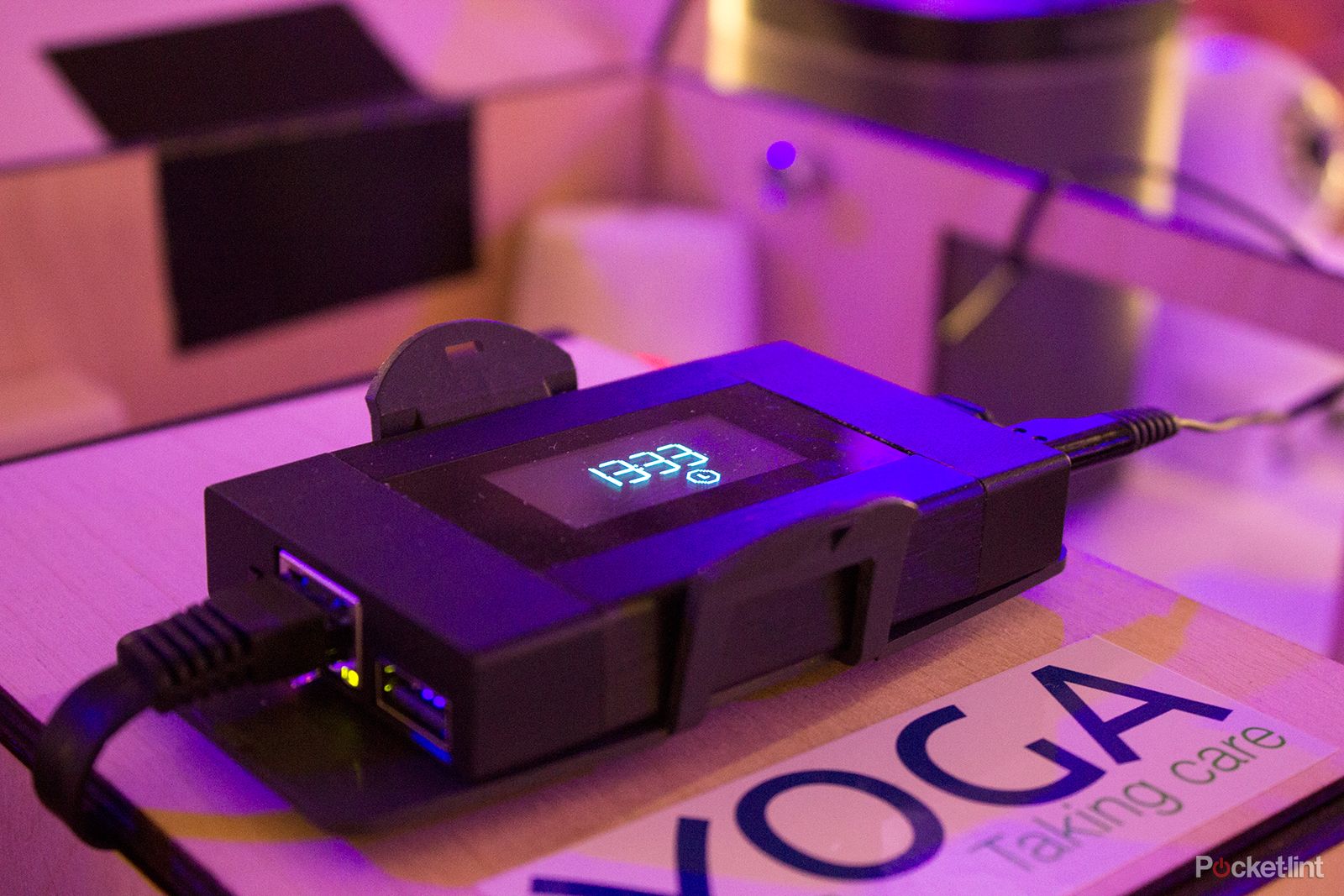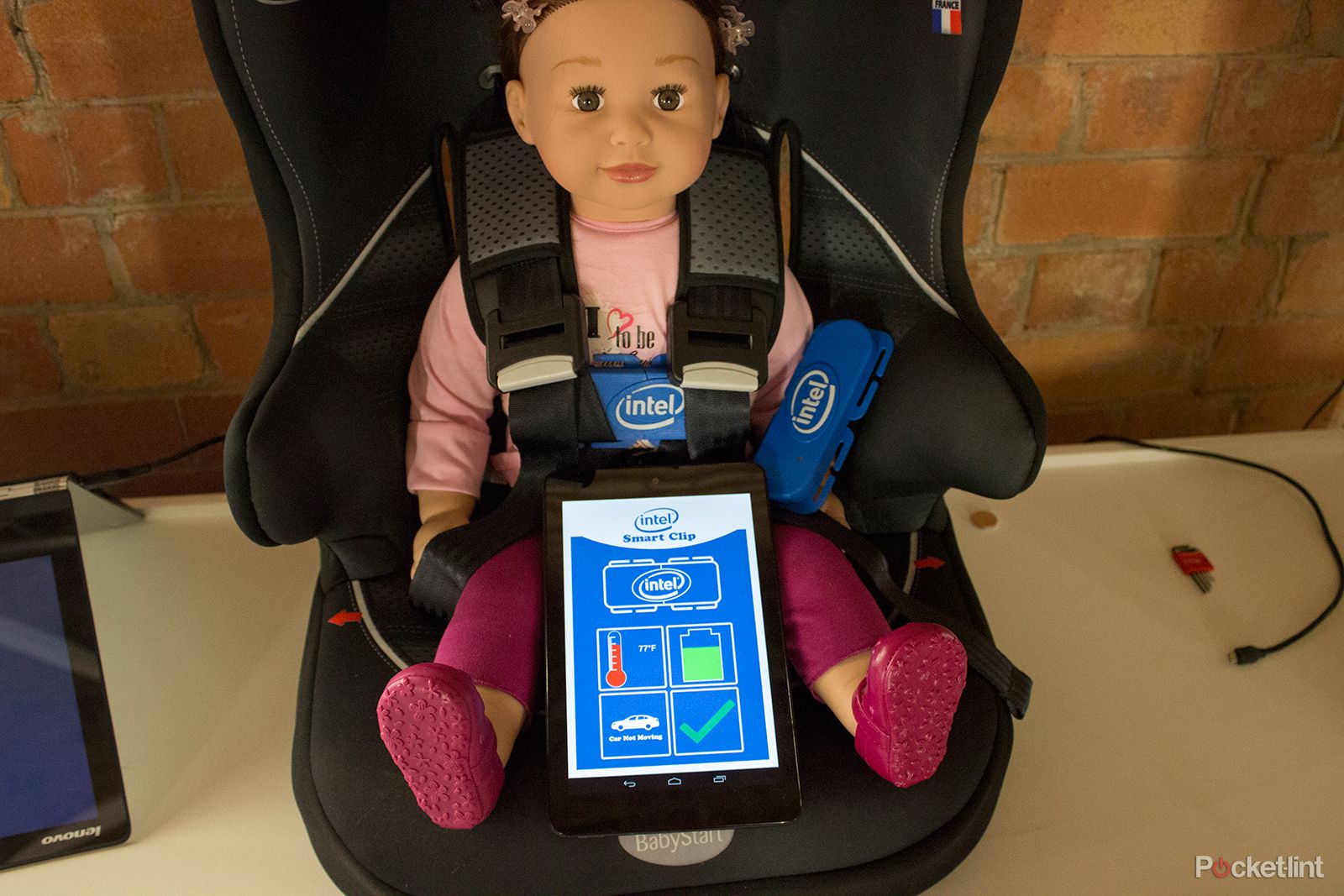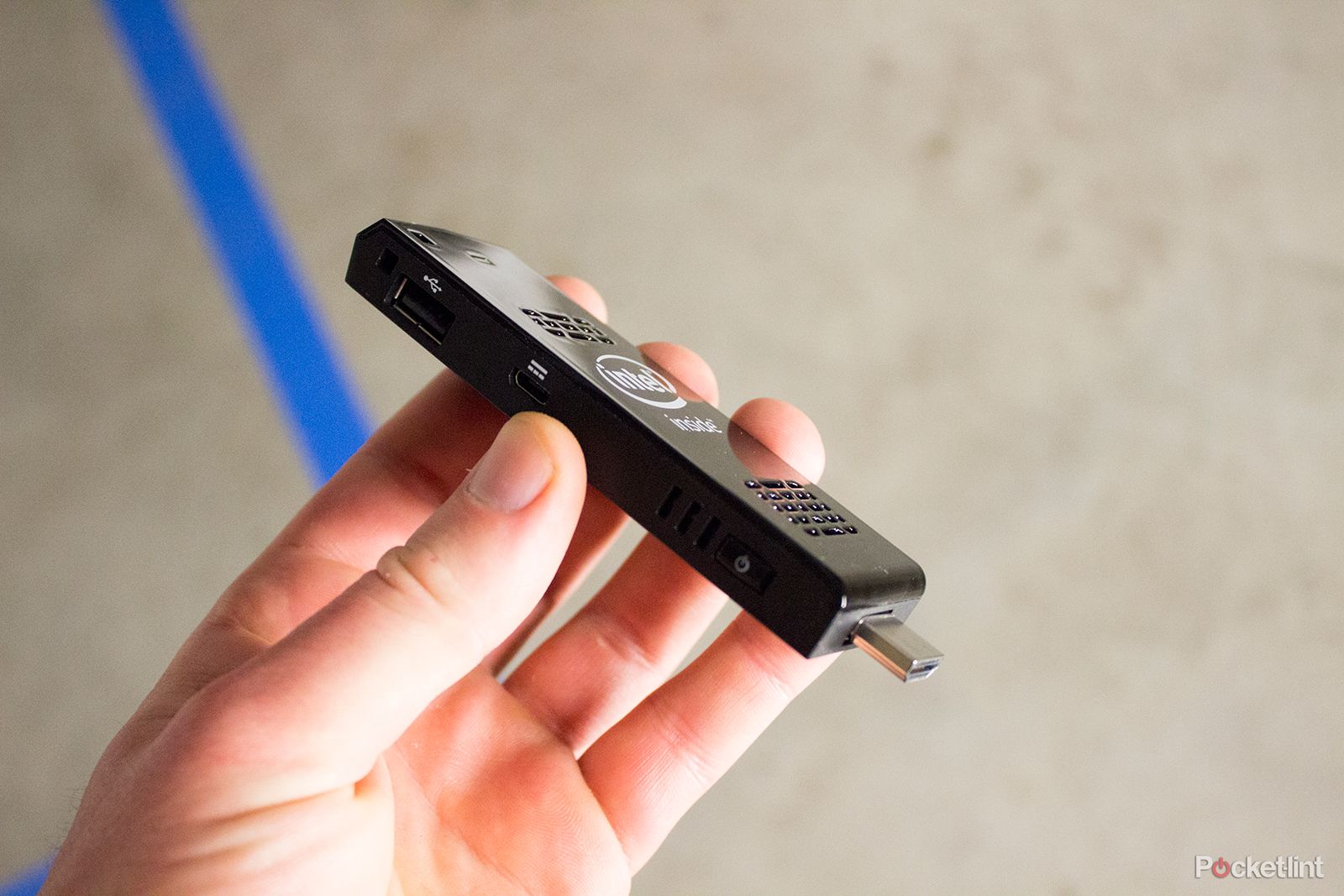Intel shows off what it's working on for the not-too distant future at its yearly event: Intel Future Showcase. We went along to see what it is we can expect in the future of tech.
Intel had plenty on display from its own brand of wireless charging, that can work through your current table, to a drone that can see the world around it.
Let's take a trip into the future.
Self-navigating drones
At the moment most drones can be set to fly autonomously from one GPS point to another. The problem here is that anything in the way will mean a crash. Enter Intel's prototype drone equipped with RealSense technology, meaning it can see.
The RealSense Drone, bespoke built by AscTec and dubbed Firefly, is able to see and dodge obstacles.
It's been shown off flying through a dense forest dodging trees, like a speeder from Return of the Jedi. It can manage up to 12mph while still avoiding obstacles.
With companies like Amazon hoping to use drones for deliveries this kind of smart sensing technology could prove vital to avoid mishaps.
Skin data transmission
If transmitting data through your skin sounds creepy, that's because it is. But it works and is non harmful, so fear not.
The idea is that you will be able to highlight text on a screen, say an address, which will save via your skin so when you touch the sat nav screen in your car it'll have that address transmitted. We warned you it was creepy.
The way it works is via a wearable, say a smartwatch or bracelet. Data from the touched device moves via your skin to the wearable where it is stored then back out when you want it to be transmitted. At the moment this involves a metal plate on a laptop but in a few years this could be built into screens everywhere.
Laptop wireless charging
Wireless charging is not new but Intel wants to make it better. Rather than sticking to the current standards it's offering a magnetic resonance system that uses the A4WP standard. What does this mean? It's more powerful at 20W for larger devices, can charge more than one thing at once and works through thick wood.
Working through thick wood means you can upgraded your current coffee table to make it wireless, rather than buying a dedicated piece of future furniture. So plonk your laptop and smartphone on the table and don't worry about power. That's the future we can't wait for. Intel says we could start seeing this in it products early next year.
Binaural audio
Intel has managed to shrink down binaural recording so soon we'll be able to listen to and record true 3D sound on a smartphone.
We tried a demo of this and when someone clapped we genuinely turned around thinking it was behind us – even though we saw the person doing it on screen. This one is difficult to explain without a live demo so we will simply say this was very exciting stuff.
IOT Brain
The IOT Brain, as the name suggests, is all about the Internet of Things. The unit we tried uses radio waves, like Wi-Fi and Bluetooth but different, to track the user to a 10cm accuracy. That level of accuracy means when you go into or out of a room the lights and music can come on and shut off, even a reading light can come on when you sit in a certain seat.
Another nice touch was multi-person use. I had a device that made lights in the room turn blue, another person had one for red. When we both got close to a light it turned pink – the maker says this could work for music too with folk and metal music fans in the same room getting rock for a happy medium.
We were assured this tech can be applied to smartphones so hopefully smarthomes will be more automated and accurate than ever, soon.
Intel Home Gateway
The Home Gateway is essentially a central point to control a smarthome. So if you have both Wi-Fi and Bluetooth gadgets about the home they can all work via this hub. That means you can control everything, like Philips Hue bulbs, a Sonos sounds system or security, all from one place - and even set rules.
So if you leave the house the lights can go off and doors lock. Then when you're a mile away heating may turn off too, if that's what you have set. We were even shown a romantic mode that you can activate before getting in where the fire lights and red lighting comes on. Classy.
Smart Clip
Believe it or not children die in cars every year because of heat, after being forgotten. The Smart Clip attaches to a child seat and connects to a parent's phone to alert them if they've left their child in the car.
The accompanying app also shows the child's temperature, if the car is moving and will add even more features in the future.
Compute Stick
The Compute Stick is already available in the US but is coming to the UK in the next few weeks. This is an entire Windows PC in a stick that uses HDMI to plug into any TV.
That means you can take your files anywhere, even a hotel room and access them via a Bluetooth keyboard and mouse. This is packing Windows 8.1, 2GB of RAM, 32GB storage and a quad-core Intel Atom processor so it can handle pretty much anything you throw at it – although hardcore video editing isn't recommended.
The Compute Stick is $150 which is £95, not bad for a stick-sized PC.
READ: Tesla Model S P85D first drive: Luxury meets insane acceleration and handling

